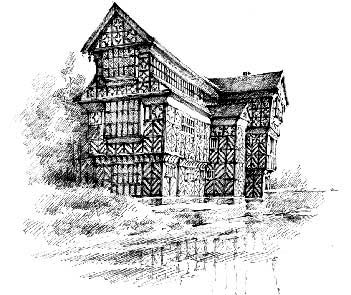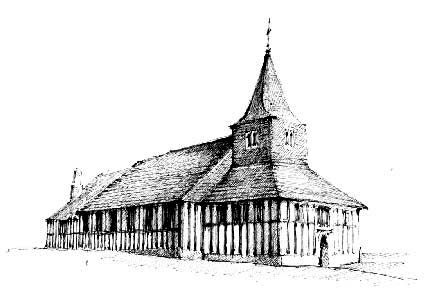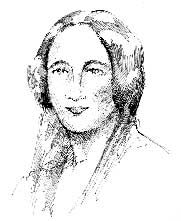Cheshire
ENGLAND’S FAVOURITE ARCHITECTURE
∗ BLACK-AND-WHITE ∗ CRANFORD
∗ OLDEST CARILLON IN ENGLAND ∗ JODRELL BANK
Little Moreton Hall, the most perfect black-and-white house in England.
CHESHIRE FOLK
Charles Dodgson ∗ James Prescott Joule ∗ John Speed ∗ Sir Joseph Whitworth ∗ George Formby ∗ Dixie Dean ∗ Sir Henry Cotton ∗ Fred Perry ∗ Glenda Jackson ∗ Ian Botham ∗ Michael Owen
County Palatine
Cheshire is one of England’s two County Palatines, along with County Durham. It was established by William the Conqueror to defend the English western border against the Welsh, and was ruled by the Earls of Chester who were given wide-ranging royal powers (‘palatine’, or ‘from the palace’) and autonomy over their own affairs within Cheshire. The palatinate remained in place until 1830, and today Earl of Chester is one of the titles of the monarch’s eldest son, the Prince of Wales.
Magpie County
Cheshire is the premier home of the black-and-white timbered architecture so beloved of the English. Even today, the most popular choice of style for new housing is mock Tudor.
In Tudor England, there was no longer any need for fortified stone houses, and the middle classes were becoming wealthy enough to build houses for themselves. In Cheshire, and other western counties, wood, particularly oak, was plentiful and the construction material of choice. The wooden frames were in-filled with wattle, a mesh of vertical wooden stakes interwoven with thin branches, and covered in daub, a clay or mud plaster mixed with straw. For weather-proofing the timbers were painted black and the plaster white. As properties were often taxed on street frontage, the ground floor would be as narrow as possible with the upper floor overhanging, giving a top-heavy look. And because the buildings were made of wood, which bent and settled over time, genuinely old timber-framed houses often appear alarmingly crooked, which is part of their charm.
Little Moreton Hall
Perhaps the supreme example of black-and-white Tudor architecture, and a true English icon, is LITTLE MORETON HALL, near Congleton, begun in 1450 by the Moretons and then continued in stages over the next 150 years. The hall remained in the ownership of the Moreton family until handed over to the National Trust in 1938.
The beautiful 14th-century black-and-white timbered church at LOWER PEOVER is reputed to be THE OLDEST AISLED WOODEN CHURCH IN EUROPE. MARTON, a few miles away, claims THE OLDEST HALF-TIMBERED CHURCH IN USE IN EUROPE, dating from 1343 – and what was once ENGLAND’S BIGGEST OAK TREE, still standing but with the trunk split into four by age.
Cranford
KNUTSFORD, near Macclesfield, is Mrs Gaskell’s ‘Cranford’. Her most popular novel, Cranford is a collection of light-hearted stories about the genteel ladies who live in this ‘pleasant little country town’. ELIZABETH GASKELL (1810–65) grew up in Knutsford herself, in what is now called Gaskell Avenue, close to the heath. Her fine brick house is marked with a plaque and she is buried in the town’s Brook Street Unitarian chapel. It is still possible to recognise Knutsford, or Cranford, from her book as it has retained its tranquil, very English, Georgian air and appearance. Although Mrs Gaskell’s novels were considered by some to be a bit light and frothy, they found popularity across the world and had some unlikely fans. That frivolous Russian author Dostoyevsky admitted that Mrs Gaskell’s Mary Barton was his inspiration for Crime and Punishment.
Eaton Hall
In 1677 SIR THOMAS GROSVENOR of EATON HALL, Eccleston, married Mary Davies, heiress to the Ebury farm estate outside London, now Belgravia and Mayfair. This laid the fortune of the Grosvenor family, now Dukes of Westminster and, after the Crown, England’s largest and richest landowners. Despite all their properties in London, Eaton Hall remains ‘the jewel in the Grosvenor crown’. There has been an Eaton Hall since the 15th century, and the house has been rebuilt several times, with perhaps the most celebrated expression being the immense Victorian neo-Gothic creation by Alfred Waterhouse. The clock tower, 178 ft (54 m) high, is all that survives of that Eaton Hall and contains THE OLDEST CARILLON OF BELLS IN ENGLAND. The rest of the house was knocked down in the 1970s and replaced with a modern, concrete structure by John Dennys, the 5th Duke’s brother-in-law. This in turn was altered and encased in a new façade in 1989.
Jodrell Bank
JODRELL BANK, west of Macclesfield, was England’s first proper space observatory. Begun just after the Second World War, it was set up by Dr Bernard Lovell of Manchester University to study cosmic rays. When it was built in 1947, the 218 ft (66 m) reflecting aerial was THE BIGGEST RADIO TELESCOPE IN THE WORLD. It was at Jodrell Bank that radio noise from the Great Nebula in Andromeda was heard – the first time an extragalactic radio source had ever been detected. Jodrell Bank soon became valuable as a world source for satellite and spacecraft tracking – it was thanks to Jodrell Bank that the West knew what was really going on in the Soviet Union space programme. The original telescope was replaced in 1957 by an even bigger radio telescope, a 250 ft (76 m) steerable dish which still sits quietly on its gantry, looming over Cheshire countryside and listening to the Heavens.
Well, I never  knew this
knew this
about
CHESHIRE FOLK
Charles Dodgson
1832–98
‘The happy spot where I was born’ is how CHARLES DODGSON remembers DARESBURY, near Runcorn, where he came into the world in 1832. Now better known as LEWIS CARROLL, author of ALICE IN WONDERLAND, the most famous children’s story in the English language, Dodgson spent his formative years in Daresbury, where his father was the vicar. There is a memorial window to him in the church, depicting many of the characters from his tales, including the CHESHIRE CAT, who could make its whole body disappear, save for the grin.
James Prescott Joule
1818–89
JAMES PRESCOTT JOULE, THE MAN WHO GAVE HIS NAME TO THE UNIT OF ENERGY, was born in SALE. His ambition in life was to replace the steam engine with the electric motor by improving the latter’s efficiency. Joule was the first to establish and measure the link between the heat created by an electrical current and mechanical energy. He also discovered that when a gas is rapidly expanded it has a cooling effect, the principle used in modern-day refrigeration.
John Speed
1552–1629
Sometimes considered the first true English historian, as opposed to just chronicler, JOHN SPEED was born in FARNDON, in west Cheshire. He spent most of his life as a tailor, but at the age of 48, when his 18 children had left home, he was finally able to devote time to his passion – making maps. He began by making the first accurate maps of the English counties, and the first town plans, along with written descriptions and the genealogy of the leading families in each county. He then wrote a history of England based on this research. John Speed’s collection of maps, which formed THE FIRST ENGLISH ATLAS, proved immensely popular, and were, in their own way, as important a legacy of the Elizabethan era as the works of Shakespeare.
Sir Joseph Whitworth
1803–77
STOCKPORT is the birthplace of the man who brought us precision engineering, SIR JOSEPH WHITWORTH. He was the first to come up with a method of producing a true flat surface, and a system of measurement accurate to within one millionth of an inch. In 1841 he developed the first standardised system for screw threads, which was adopted by the railway companies and became ‘BRITISH STANDARD WHITWORTH’ or BSW. As anyone who owns an older British car knows, until the 1970s much of British industry used Whitworth precision tools and measurements, but since Britain’s entry into the European Union, metric measurements have been adopted.
GEORGE FORMBY (1904–61), singer, comedian and ukulele player, was born in WARRINGTON. His most famous song was ‘Leaning on a Lamppost’.
DIXIE DEAN (1907–80), THE ONLY PLAYER IN ENGLISH FOOTBALL TO SCORE 60 GOALS IN ONE SEASON (for Everton in 1927–28), was born in BIRKENHEAD.
SIR HENRY COTTON (1907–87), the first golfer to be knighted, was born in HOLMES CHAPEL.
FRED PERRY (1909–95), the last English tennis player to win the Wimbledon men’s singles title (in 1934, 35 and 36), was born in STOCKPORT.
GLENDA JACKSON, actress and MP, was born in BIRKENHEAD in 1936. She won two Best Actress Oscars, for Women in Love in 1969 and A Touch of Class in 1973.
IAN BOTHAM, holder of the record for the highest number of Test wickets ever taken by an English cricketer (383), was born in HESWALL in 1955.
MICHAEL OWEN, the youngest footballer to play for England in the 20th century, was born in CHESTER in 1979. He scored a memorable hat-trick in a 5–1 defeat of Germany in 2001.











 knew this
knew this
